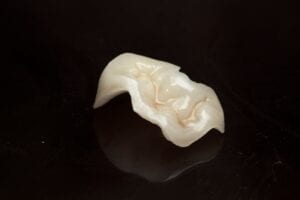Signs a Filling Needs to be Replaced

Did you know that the average American aged 20-34 years old has approximately four dental fillings according to the National Institute of Dental and Craniofacial Research? Dental fillings are restorations used to treat tooth decay. After the decayed tissue has been removed, fillings are the materials placed in the remaining cavity to prevent the spread of decay and protect the tooth.

The materials used for fillings depends on what type of filling is used. For example, direct fillings are fabricated using composite resin. Since composite resin can be hardened in place within a matter of minutes, this also means that composite fillings are said to be direct restorations because they can be completed entirely inside the mouth. Indirect restorations, on the other hand, are fabricated outside of the mouth in a dental laboratory before being cemented in place. Because of this, indirect fillings are usually fabricated from porcelain or even metal in some cases.
After having a filling placed, one of the most common things that people wonder is how long their filling will last and at what point it will need to be replaced. How long a dental filling lasts will depend on a number of factors, the first being its material. This is because composite resin, porcelain, and metal are all different materials that have different lifespans. On average, composite fillings tend to last around 5-7 years, while porcelain and metal fillings last about 10-15 years. However, there are other factors that can influence the longevity of your filling including: its location on the tooth, the tooth’s location in the mouth, and whether you are a bruxer or not.
For these reasons, it is not only necessary to know how long your filling is anticipated to last, but you should also know what signs to look for that show it needs to be replaced. At a glance, you may need to have your filling replaced if:
It Has Fallen Out
In cases where your filling has fallen out completely, then you will need to have it replaced in a timely manner to prevent the tooth from becoming infected. When a filling falls out, you may feel a gap in your tooth where it once was and/or you may even find the filling in your mouth. There are also cases where your filling may become loose. In these cases, it is still best to have your filling replaced before it gets to the point of falling out completely.

It Has Become Damaged
In addition to falling out of becoming loose, the next sign that your filling needs to be replaced is if it becomes damaged. Although fillings are fabricated for strength and durability, they can still become damaged just like your natural teeth. When a filling becomes damaged, you may actually see a physical crack in the filling. In some cases you may even find small fragments of the filling that have fallen off. Still, there are also cases where filling damage can only be found through a dental x-ray.
The Filling is Discolored
Dental materials such as porcelain and composite resin, are fabricated for their strength and aesthetic appeal. Although metal is also used for filling fabrication, it is no longer nearly as common. With the exception of metal, fillings are fabricated so that they match with the surrounding tooth structure. As a result, if you notice the filling changing color, becoming darker, or turning yellow, then this could indicate the filling needs to be replaced. In the case of metal fillings, if the metal starts to darken, this can also indicate a filling replacement is necessary.
Your Tooth Hurts
Besides the appearance of your filling, another possible sign that a filling needs to be replaced is tooth pain. This can take the form of general, constant tooth pain and soreness, as well as sudden, deep tooth pain associated with tooth sensitivity to hot, cold, or sweet. Both types of pain can indicate that the filing is no longer creating a tight seal with the tooth, meaning that it needs to be replaced.
You Have Undergone Facial Trauma
Finally, people who have undergone a recent facial trauma are more likely to require a filling replacement much sooner than generally recommended. This is because facial trauma can disrupt both the teeth and their restorations, which can cause the filling to become damaged, loose, knocker out, or even dysfunctional. In any case, it is also encouraged to visit your dental professional if you have undergone a recent facial trauma or accident.






Recent Comments